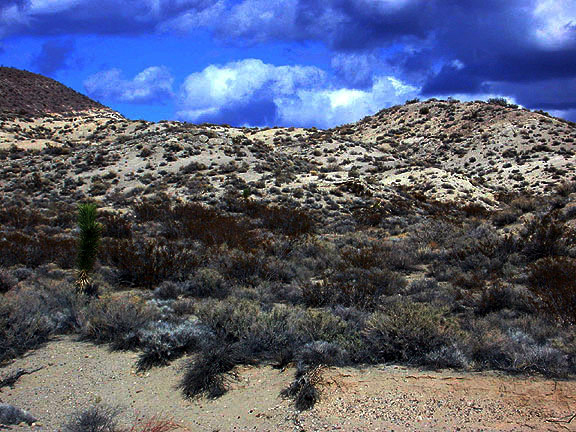
| This is a view roughly northeastward to typical fossil bone-bearing badlands developed in the upper portions of the late Middle Miocene Dove Spring Formation, El Paso Mountains, Red Rock Canyon State Park, Kern County, California; the fossiliferous strata consist of lacustrine (lake-originated) clay shales, siltstones, limestones and sandstones, with interbeds of volcanic tuff and alluvial gravels. Some 88 species of vertebrate animals have been recovered from the Dove Spring Formation of the Ricardo Group, including fish, reptiles, amphibians, birds and scores of mammals. As a matter of fact, the Dove Spring Formation at Red Rock Canyon State Park yields the most complete succession of late Barstovian through early Hemphillian (North American Cenozoic Era Land Mammal Chronology) Stages (roughly 13 to 7 million years old) vertebrate fossils in the western United States. Fossil collecting is of course not allowed at Red RockCanyon State Park, except by special permit issued by the California State Park authorities--a permit given solely to trained, qualified scientists with a degree from an accredited university whose research can be verified through independent investigators. |